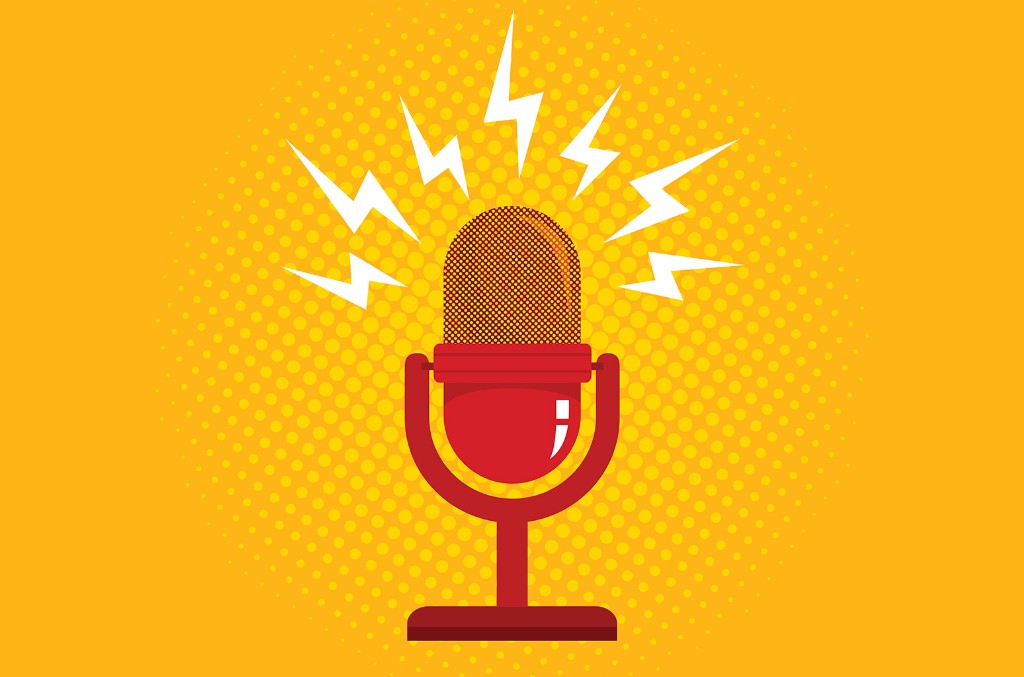While the United States doesn’t have a performance right for master recordings except for digital transmissions, U.S. officials are including that issue and a variety of other copyright improvements in trade negotiations with other countries, like Canada and the U.K., according to RIAA senior vp George York.
How trade agreements could impact music industry renumeration was just one of many music business issues discussed during three panels at A2IM’s virtual IndieWeek conference, held June 15–18.
On Wednesday, panelist also wrestled with such topics as what impact a potential deal between iHeartMedia and Liberty Media — which already owns a controlling stake in Sirius XM, which owns Pandora; and about a 33% stake in Live Nation, which owns TicketMaster — could have on the music industry and recording artists.
Other panelist looked at how the National Association of Broadcasters (NAB) are pushing for deregulation and how that would impact airplay; how indie label recording contracts negotiations are conducted; and the importance of ARPU (average revenue per user) in measuring the success of the music industry’s economics.
U.S. Trade Deals Boosting Music Industry
On the subject of U.S. trade negotiations, York said trade agreements matter to the music industry “because they can affect renumeration” to artists and labels in songwriters and publishers.
For artists and labels, the recent USMCA trade agreement with Canada and Mexico — which replaced the North America Free Trade Agreement — includes a provision that U.S. artists are to be treated no less fairly than their Canadian counterparts.
What that means is that if Canadian artists and labels receive royalties when their songs are played on terrestrial radio, so too should American artists and labels be paid. “This is the end of a major piece of discriminations” against American artists, York stated. “In Canada for the past 20 years, U.S. repertoire couldn’t get renumeration but Canada artists and producers can get it.”
As a result of that trade agreement, U.S. artists and producers can get “renumeration” from Canadian terrestrial radio. This will produce payments to U.S. artists and producers totaling 24 million Canadian dollars, so it’s “an important win,” he said.
The trade agreement touches on a few other parts of copyright law including Canada extending the life of copyright to align with the U.S., bringing the term in Canada is for life of author plus 70 years. Previously, it had been life of author plus 50 years there.
Moreover, York reported the copyright term gains from the USMCA trade agreement are also part of the negotiations with the U.K. trade agreement, which is necessitated by that country’s withdrawal from the European Union.
Does Radio Consolidation Lead to Homogenization?
Another panel looked at consolidation’s impact on the U.S. radio industry, focusing on Liberty Media’s potential acquisition of a controlling interest in iHeartMedia and the possibility that radio deregulation could happen in the U.S.
On the latter possibility, the NAB and its radio lobby are pushing hard for deregulation of radio ownership rules, which currently place limits on how many radio stations a company can own in any market, reported lawyer Rachel Stilwell of Stilwell Law, which represents the Music First Coalition on this matter.
While deregulation has been an issue for many months now, Stilwell said that the NAB is using the COVID-19 pandemic “to get this deregulation done now.”
The NAB argues that it needs this deregulation so it can compete against the digital services and satellite radio. But the music industry counters that it will hurt independent owned radio stations and smaller chains.
Besides the music industry, Stilwell said this type of deregulation will also hurt the smaller radio station owners, which will be “competing against enormous supersized clusters,” as well as the same digital services that the bigger radio stations owners have to compete against.
If the deregulation occurs, the industry “knows it would be the homogenization of music” broadcasting, Stilwell argued. Josh Hurvitz, a partner with the Washington, D.C. lobbying firm NVG, which represents A2IM, agreed, pointing out that the NAB “wraps themselves in the argument that they are serving local communities at every turn.” Yet, he noted, iHeartMedia has already laid off about 1,000 DJs and others at the local radio stations they own in an attempt to seek synergy and savings. “That means they already are going down the homogenization road and away from having a local feel,” he said.
Historically, local radio has played a role in breaking out regional acts, which would be lost if deregulation occurs, Hurvitz pointed out. In general, the music industry is opposed to this deregulation because, it fears it will result in less diversity in programming and homogenization so that local tastes are no longer reflected by radio, Stilwell said.
Also troubling is the potential deal between iHeartMedia, the country’s largest radio conglomerate, and Liberty Media. If allowed to proceed, this would give Liberty a controlling interest in the largest radio chain to add to its already controlling interests in SiriusXM and Pandora, and roughly 33% stake in Live Nation, the world’s largest concert promoter and owner of Ticketmaster, the world’s biggest seller of live event tickets.
Hurvitz said that Liberty and iHeartMedia have asked the Department of Justice — which oversees antitrust matters — for a preliminary take on that deal. Radio play and touring is important for artists and this deal could impact both those areas for the music industry. If a band has a relationship with the 9:30 club in Washington DC, Hurvitz posited, it’s possible that if the iHeart/Liberty deal is allowed to go through, a band’s airplay could be tied to waving goodbye to playing at the 9:30 club and being pressured to go into a LiveNation venue down the road. “That kind of behavior will likely happen if this deal goes through,” he said.
“It blows me away in the number of ways [this deal] can take money away from artists,” said Ron Knox, a senior research and writer for the Institute for Local Self Reliance, a non-profit that says it challenges concentrated economic and political power and a proponent of decision making accountable to local communities. He said that with this deal, Liberty would have its “hand in the pocket” of too many artist income streams. LiveNation has already got into trouble with the DOJ for its ticketing practices, Hurvitz pointed out. “Imagine if they had the power of radio behind them, he added.
Yet, A2IM president and CEO Richard James Burgess sees some possible relief on the horizon, at least in terms of antitrust matters and regulations for digital companies. “The pendulum swung very hard beginning 20 years ago with the dot-com boom, and now it may be swinging back,” he said in a panel in a session in which he introduced Hurvitz as A2IM’s new lobbyist. Later, he conceded, “I don’t know that it’s swinging back, but it seems to have reached its zenith.”
“The major tech players have been the wonder children of our economy and in Washington they were seen as the cool kidsm so Congress didn’t want to tussle with them,” Hurvitz added.
But now there seems to be a groundswell among Democratic office holders and candidates against the big tech companies. This is also gaining momentum with the Trump administration, with the DOJ looking into Google and the House Judiciary Committee looking into Google, Amazon, Facebook and Apple.
Temperature Check: U.S. Music Industry
Russ Crupnick, the managing partner of MusicWatch, looked at the economic health of the U.S. music industry currently and historically.
While artists, songwriters and their managers often look at the per-stream rate, the major music companies more often focus on digital services’ ARPU. That measures how healthy a service is and if it has a lot of subscribers and ARPU is going up, then that’s the sign of a healthy business model.
On the other hand, if ARPU is going down, it could be the sign of an unhealthy business model — but there also could be mitigating circumstances. For example, a digital service ARPU could be doing down because it is in a customer acquisition mode, which means it is discounting its fee; or if it is in expansion mode to other countries where the average monthly rate for subscription services are lower, he explained.
Looking at SiriusXM, Crupnick reported its most recent financials show ARPU at $13.95 per subscriber, which translates into about $167 a year. Meanwhile, Spotify’s ARPU is about $7 a month or about $90 a year — and it’s going down, he added, due to trial subscriptions in a move to gain more subscribers and expansion efforts globally.
When discussing expansion and customer acquisition strategies, Crupnick posed a question: Would you rather have 1 million users spending $8 a month or would you rather have 10 million customers spending $4 a month? “I would take the $40 million,” he said.
Today, in the U.S. there are about 80 million paid subscribers, he said. Back in 1999, citing earlier research apparently conducted when he was at NPD Group, he said there were about 180 million people buying CDs in the U.S. spending about $84 annually — or $122, adjusted for inflation.
Since then, annual ARPU has fallen, especially as the sale model lost luster. It was about $61 in 2004 and down to about $50 in 2014. Now, with streaming the dominant form of music consumption, sales is contributing about $29 per year, per consumer.
But with streaming, nowadays in the U.S., ARPU is at about $84 per music consumer — and holding steady he said. “So we are in the same place as [1994], or behind it if adjusted for inflation,” Crupnick said. “So the question is how to raise ARPU and how to get more customers.”
If the industry would add $9 per consumer, that would bring the U.S. industry another $1 billion, he said. How do we improve spending on streaming he asked?
For starters, Crupnick said, the industry could raise prices, try to crack down on subscriber sharing and weed out illegitimate family plan users, and get subscribers to trade up by offering more premium content or bundling.



